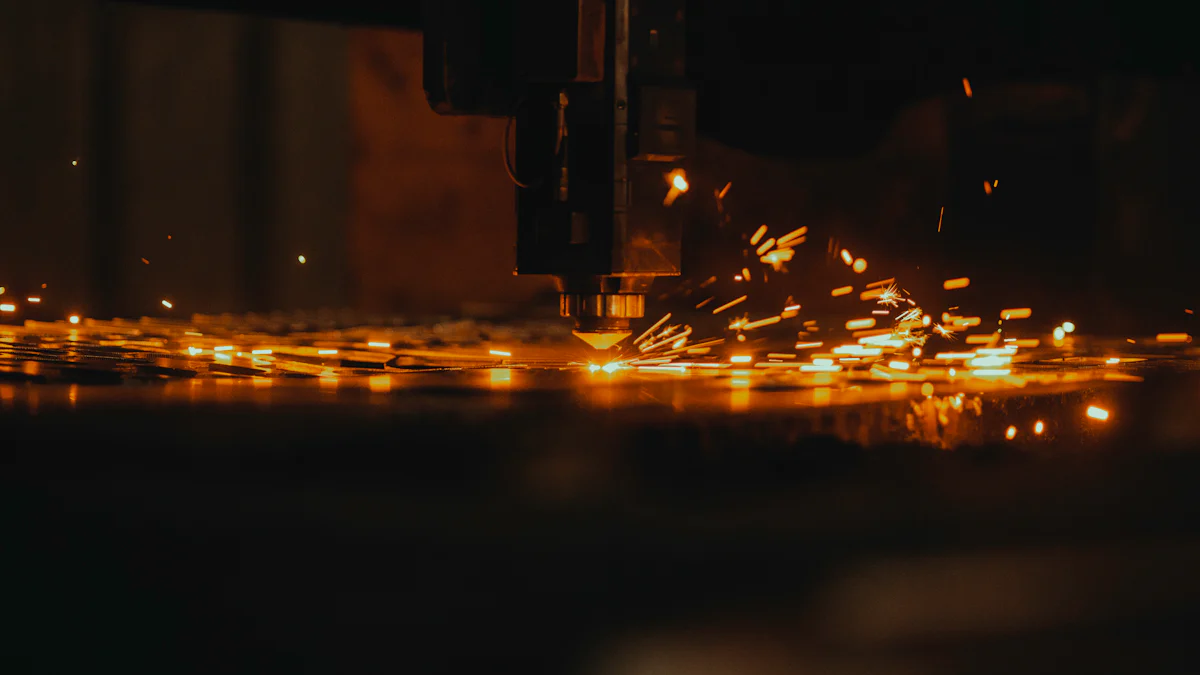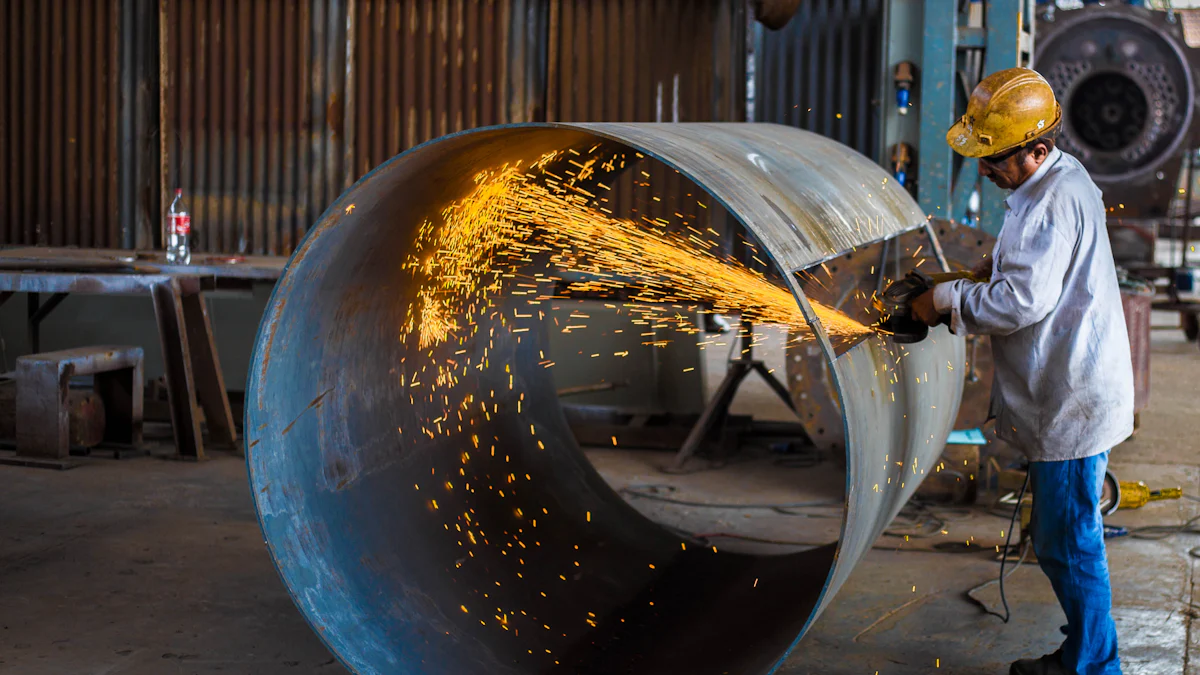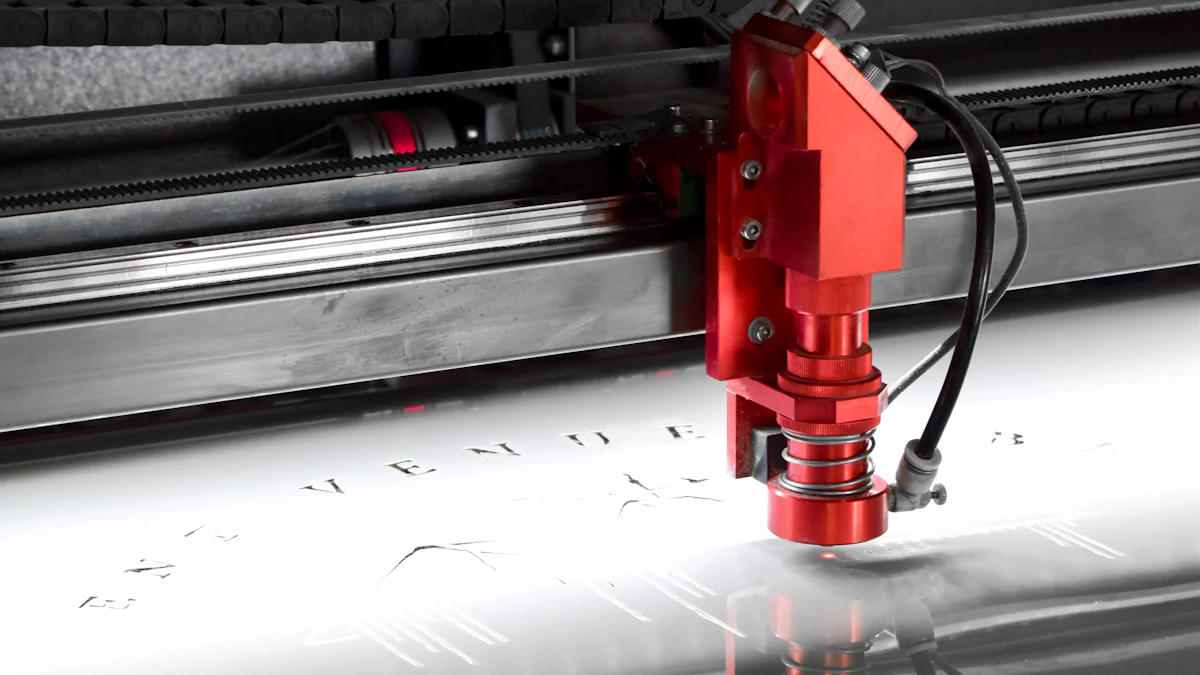Tips for Choosing the Best Water Jet Cutting Machine

Choosing the right water jet cutting machine is crucial for achieving optimal results in your projects. This machine offers unmatched precision and versatility, making it a valuable tool for various industries. By selecting a machine tailored to your specific needs, you can improve efficiency and reduce operational costs. Water jet cutting technology also ensures clean cuts without heat-affected zones, preserving material integrity. Understanding what is water jet cutting machine and its capabilities allows you to make informed decisions that enhance productivity and deliver high-quality outcomes.
Key Takeaways
- Understand the unique advantages of water jet cutting, including precision, versatility, and the ability to cut without heat-affected zones, ensuring material integrity.
- Evaluate material compatibility carefully; choose a machine that can handle both soft and hard materials to maximize its utility across various projects.
- Consider the cutting area size based on your project needs; ensure the machine can accommodate the dimensions of the materials you frequently work with.
- Assess operational costs, including energy consumption and abrasive material expenses, to ensure the machine aligns with your budget and long-term financial goals.
- Prioritize machines with advanced features like CNC integration and multi-axis capabilities for enhanced precision and efficiency in complex cutting tasks.
- Research vendors thoroughly; select manufacturers known for quality machines and reliable customer support to ensure a smooth purchasing experience.
- Look for customer testimonials and industry certifications to gauge the reputation of both the machine and the vendor, ensuring a wise investment.
Understanding What is Water Jet Cutting Machine

Definition and Functionality
A water jet cutting machine is a highly advanced tool that uses a high-pressure stream of water, sometimes mixed with abrasive particles, to cut through various materials. This process relies on the principle of accelerated erosion, where the water stream removes material with precision and speed. Unlike traditional cutting methods, water jet cutting does not generate heat, making it ideal for materials sensitive to thermal changes. You can use this technology to create intricate designs or cut thick materials with remarkable accuracy.
Water jet cutting machines are versatile and cater to industries such as aerospace, automotive, and manufacturing. They can handle a wide range of materials, including metals, glass, rubber, and ceramics. Some machines are designed for soft materials like foam, while others, equipped with abrasives, can cut through hard metals and stone. By understanding what is water jet cutting machine, you can appreciate its role in modern manufacturing and its ability to meet diverse cutting needs.
Advantages of Water Jet Cutting Technology
Precision and Versatility
Water jet cutting machines offer unmatched precision, allowing you to achieve tolerances as tight as +/-0.001 inches. This level of accuracy makes them suitable for applications requiring intricate cuts, such as medical devices and aerospace components. Their versatility enables you to work with a variety of materials, from delicate composites to robust metals. Whether you need to cut small parts or large components, these machines deliver consistent results.
Cold Cutting Process (No Heat-Affected Zones)
One of the most significant advantages of water jet cutting is its cold cutting process. Unlike methods like plasma or laser cutting, water jet cutting does not produce heat-affected zones (HAZ). This ensures that the material's structural integrity remains intact, which is especially important when working with heat-sensitive materials like aluminum or certain steels. You can rely on this technology to create clean cuts without compromising the quality of the material.
Ability to Cut a Wide Range of Materials
Water jet cutting machines can handle almost any material. Pure water jets are ideal for soft materials like rubber and foam, while abrasive water jets can cut through hard substances such as granite, titanium, and steel. These machines can even cut materials with microcracks, like fiberglass, without causing further damage. Whether you're working with thin sheets or thick blocks, water jet cutting provides a reliable solution for your cutting needs.
Key Factors to Consider When Choosing a Water Jet Cutting Machine

Material Compatibility
Types of Materials the Machine Can Cut
Understanding the materials you plan to cut is essential when selecting a water jet cutting machine. Different machines handle specific materials better than others. For instance, pure water jet machines excel at cutting soft materials like foam, rubber, and textiles. Abrasive water jet machines, on the other hand, are designed for harder materials such as metals, ceramics, and stone. If your projects involve a mix of materials, you should choose a versatile machine that accommodates both soft and hard substances. This ensures you maximize the machine's utility across various applications.
Thickness and Hardness Limitations
The thickness and hardness of the materials you work with directly impact the machine's performance. Machines with higher horsepower can cut through thicker and denser materials more efficiently. For example, some machines can handle steel up to 12 inches thick, while others may struggle with anything beyond 6 inches. Always evaluate the machine's cutting capabilities to ensure it aligns with your material requirements. This step prevents potential limitations during operation and ensures consistent results.
Cutting Area and Machine Size
Determining the Required Cutting Area
The size of the cutting area determines the dimensions of the materials you can process. If your projects involve large sheets or components, you need a machine with a spacious cutting bed. For smaller, intricate parts, a compact cutting area may suffice. Assess your production needs carefully to determine the ideal cutting area. This ensures the machine can handle your workload without unnecessary compromises.
Space Considerations for Machine Installation
Before purchasing a water jet cutting machine, evaluate the available space in your workspace. Machines vary in size, from compact models to large industrial systems. Measure your workspace to ensure the machine fits comfortably and leaves room for operators to move around safely. Additionally, consider the machine's weight and whether your floor can support it. Proper planning prevents installation challenges and ensures smooth operation.
Operational Costs
Energy Consumption and Water Usage
Operational costs play a significant role in the long-term value of a water jet cutting machine. Machines with efficient designs consume less electricity and water, reducing utility expenses. For instance, some models, like OMAX machines, are known for their lower energy and water consumption compared to other designs. Evaluate the machine's specifications to estimate its operational efficiency and choose one that aligns with your budget.
Abrasive Material Costs
Abrasive materials, such as garnet, are essential for cutting hard materials. However, they contribute significantly to operating expenses. Machines with optimized abrasive usage can help you save costs without compromising performance. Compare different models to identify those with efficient abrasive consumption. This ensures you maintain cost-effectiveness while achieving high-quality cuts.
Maintenance and Downtime Expenses
Regular maintenance is crucial for keeping your machine in optimal condition. Machines with complex designs may require more frequent servicing, leading to higher maintenance costs. Additionally, downtime during repairs can disrupt your workflow and increase expenses. Choose a machine with a reputation for durability and reliability. Research customer reviews and manufacturer warranties to ensure you invest in a machine with minimal maintenance needs.
Special Features and Technology
CNC Integration and Automation
CNC (Computer Numerical Control) integration transforms water jet cutting machines into highly efficient tools. With CNC technology, you can program the machine to execute precise cuts automatically. This eliminates the need for manual intervention, reducing errors and improving productivity. Automation also allows you to handle complex designs with ease, making it ideal for industries like aerospace and automotive manufacturing.
Modern water jet cutting machines equipped with CNC systems offer user-friendly interfaces. These interfaces simplify programming, even for operators with minimal technical expertise. By automating repetitive tasks, CNC integration saves time and ensures consistent results. If your projects demand high precision and efficiency, choosing a machine with CNC capabilities is essential.
Multi-Axis Cutting Capabilities
Multi-axis cutting capabilities expand the versatility of water jet cutting machines. While standard machines operate on two axes (X and Y), advanced models include additional axes, such as Z or rotational axes. This feature enables you to cut three-dimensional shapes and intricate geometries. For example, multi-axis machines can create beveled edges or complex contours, which are often required in architectural and engineering applications.
These machines excel in handling challenging materials and designs. Whether you need to cut thick metals or delicate composites, multi-axis cutting ensures accuracy and flexibility. Investing in a machine with this capability allows you to tackle diverse projects and meet unique client requirements.
Advanced Software for Precision Cutting
Advanced software enhances the precision and functionality of water jet cutting machines. Many modern machines come with specialized software that optimizes cutting paths and minimizes material waste. This software calculates the most efficient way to cut a design, saving both time and resources. It also allows you to simulate cuts before actual operation, reducing the risk of errors.
Some software solutions integrate seamlessly with CAD (Computer-Aided Design) programs. This compatibility enables you to import complex designs directly into the machine, streamlining the workflow. Additionally, advanced software often includes features like real-time monitoring and diagnostics. These tools help you maintain consistent performance and identify potential issues early.
When selecting a water jet cutting machine, prioritize models with robust software capabilities. This ensures you achieve the highest level of precision and efficiency in your operations.
Evaluating Vendors and Manufacturers
When selecting a water jet cutting machine, evaluating vendors and manufacturers is essential. The right vendor ensures you receive a high-quality machine and reliable support throughout its lifespan. This section will guide you through the critical aspects to consider.
Quality and Variety of Machines
Range of Models and Customization Options
A reputable manufacturer offers a wide range of models to suit different needs. Some machines are designed for small-scale operations, while others cater to industrial-level production. You should assess your specific requirements and choose a model that aligns with your workload and material types. Many manufacturers also provide customization options. These allow you to tailor the machine to your unique needs, such as adding advanced features or adjusting the cutting area size.
For example, manufacturers like OMAX offer machines equipped with the Intelli-MAX® Software Suite. This software enhances precision and supports 5-axis motion for cutting complex 3D patterns. Such features make these machines versatile and suitable for diverse applications.
Build Quality and Durability
The build quality of a water jet cutting machine directly impacts its performance and longevity. Machines constructed with robust materials and precise engineering deliver consistent results over time. You should inspect the machine's components, such as the pump and cutting head, to ensure they meet industry standards. Durable machines reduce maintenance needs and minimize downtime, saving you money in the long run.
Investing in a machine with a strong reputation for durability ensures reliable operation. High-quality machines often come with certifications or awards, which reflect their superior construction and performance.
Customer Support and Service
Availability of Technical Support
Reliable technical support is crucial for maintaining smooth operations. You should choose a vendor that provides accessible and knowledgeable support teams. Whether you need assistance with installation, troubleshooting, or software updates, responsive technical support ensures minimal disruptions to your workflow.
Some manufacturers offer remote support options, allowing technicians to diagnose and resolve issues quickly. This feature can save valuable time and prevent prolonged downtime.
Warranty and Maintenance Services
A comprehensive warranty demonstrates the manufacturer's confidence in their product. You should review the warranty terms carefully, including coverage for parts and labor. Machines with extended warranties often provide better value, as they reduce unexpected repair costs.
In addition to warranties, consider the availability of maintenance services. Regular servicing keeps your machine in optimal condition and extends its lifespan. Vendors that offer maintenance packages or on-site servicing add convenience and reliability to your purchase.
Reputation and Reviews
Customer Testimonials and Case Studies
Customer testimonials and case studies provide valuable insights into a vendor's reliability. You should look for reviews from users with similar needs to yours. Positive feedback about machine performance, ease of use, and customer service indicates a trustworthy vendor.
Case studies highlight real-world applications of the machine. They showcase how other businesses have benefited from the technology, helping you gauge its suitability for your operations.
Industry Certifications and Awards
Industry certifications and awards reflect a manufacturer's commitment to quality and innovation. Certifications, such as ISO standards, ensure the machine meets rigorous performance and safety criteria. Awards recognize excellence in design, functionality, and customer satisfaction.
Choosing a vendor with certified and award-winning machines gives you confidence in your investment. It also ensures you receive a product that adheres to industry best practices.
By thoroughly evaluating vendors and manufacturers, you can make an informed decision. Prioritize quality, support, and reputation to ensure your water jet cutting machine delivers exceptional performance and value.
Selecting the best water jet cutting machine requires careful consideration of several factors. You should evaluate material compatibility, operational costs, and vendor reliability to ensure the machine meets your needs. Reliable machines with low maintenance requirements, as highlighted by experts, save time and enhance productivity. Assess your specific requirements, such as cutting area and material types, before making a decision. Consult reputable vendors who offer quality machines and strong customer support. By taking these steps, you can invest in a machine that delivers precision, efficiency, and long-term value for your projects.
FAQ
What is a water jet cutting machine used for?
A water jet cutting machine is used to cut a wide variety of materials with precision. It is commonly employed in industries like aerospace, automotive, and manufacturing. You can use it to create intricate designs, cut thick materials, or handle delicate components without causing damage. Its versatility makes it suitable for metals, glass, rubber, ceramics, and even soft materials like foam.
How does a water jet cutting machine work?
A water jet cutting machine uses a high-pressure stream of water, often mixed with abrasive particles, to erode and cut through materials. The process relies on accelerated erosion, where the water stream removes material with speed and accuracy. This method avoids heat generation, preserving the structural integrity of the material.
What are the advantages of using a water jet cutting machine?
Water jet cutting machines offer several benefits:
- Precision: Achieve tolerances as tight as +/-0.001 inches.
- Versatility: Cut a wide range of materials, from soft foam to hard metals.
- Cold Cutting: Avoid heat-affected zones, preserving material quality.
- Eco-Friendly: Use water and abrasives, which are less harmful to the environment compared to other cutting methods.
These advantages make water jet cutting an efficient and reliable choice for various applications.
What factors should I consider before purchasing a water jet cutting machine?
When buying a water jet cutting machine, consider the following:
- Material Compatibility: Ensure the machine can handle the materials you work with regularly.
- Cutting Area: Match the machine's cutting bed size to your project dimensions.
- Operational Costs: Evaluate energy consumption, water usage, and abrasive material costs.
- Special Features: Look for CNC integration, multi-axis capabilities, and advanced software.
- Vendor Reliability: Choose a reputable manufacturer with strong customer support.
By addressing these factors, you can make an informed decision that enhances efficiency and supports your business goals.
Can a water jet cutting machine cut thick materials?
Yes, water jet cutting machines can cut thick materials. Machines with higher horsepower can handle materials up to 12 inches thick, depending on the material type. Always check the machine's specifications to ensure it meets your thickness requirements.
Is a water jet cutting machine expensive to maintain?
Maintenance costs depend on the machine's design and build quality. Machines with durable components require less frequent servicing, reducing expenses. However, you should account for costs related to abrasive materials, pump maintenance, and potential downtime. Choosing a reliable machine with a good warranty can minimize long-term maintenance costs.
What is the difference between pure water jet and abrasive water jet cutting?
- Pure Water Jet Cutting: Uses only water to cut soft materials like foam, rubber, and textiles.
- Abrasive Water Jet Cutting: Adds abrasive particles to the water stream, enabling it to cut hard materials like metals, ceramics, and stone.
Your choice depends on the materials you plan to cut and the precision required.
How do I determine the right cutting area for my machine?
To determine the right cutting area, assess the dimensions of the materials you work with most frequently. If you handle large sheets or components, opt for a machine with a spacious cutting bed. For smaller projects, a compact cutting area may suffice. Matching the cutting area to your needs ensures efficient operation.
Are water jet cutting machines environmentally friendly?
Yes, water jet cutting machines are considered environmentally friendly. They use water and natural abrasives, which produce minimal waste. Additionally, the cold cutting process eliminates harmful emissions associated with heat-based cutting methods. This makes them a sustainable choice for many industries.
How do I choose a reliable vendor for a water jet cutting machine?
To select a reliable vendor, consider the following:
- Quality of Machines: Look for durable models with advanced features.
- Customer Support: Ensure the vendor offers technical assistance and maintenance services.
- Reputation: Check customer reviews, testimonials, and industry certifications.
A trustworthy vendor provides high-quality machines and ongoing support, ensuring a smooth experience.
See Also
Comprehensive Instructions for Operating a Hair Clipper
What Is the Price of a Coal Cutting Machine
Key Parts of a Plasma Cutting Equipment Explained
